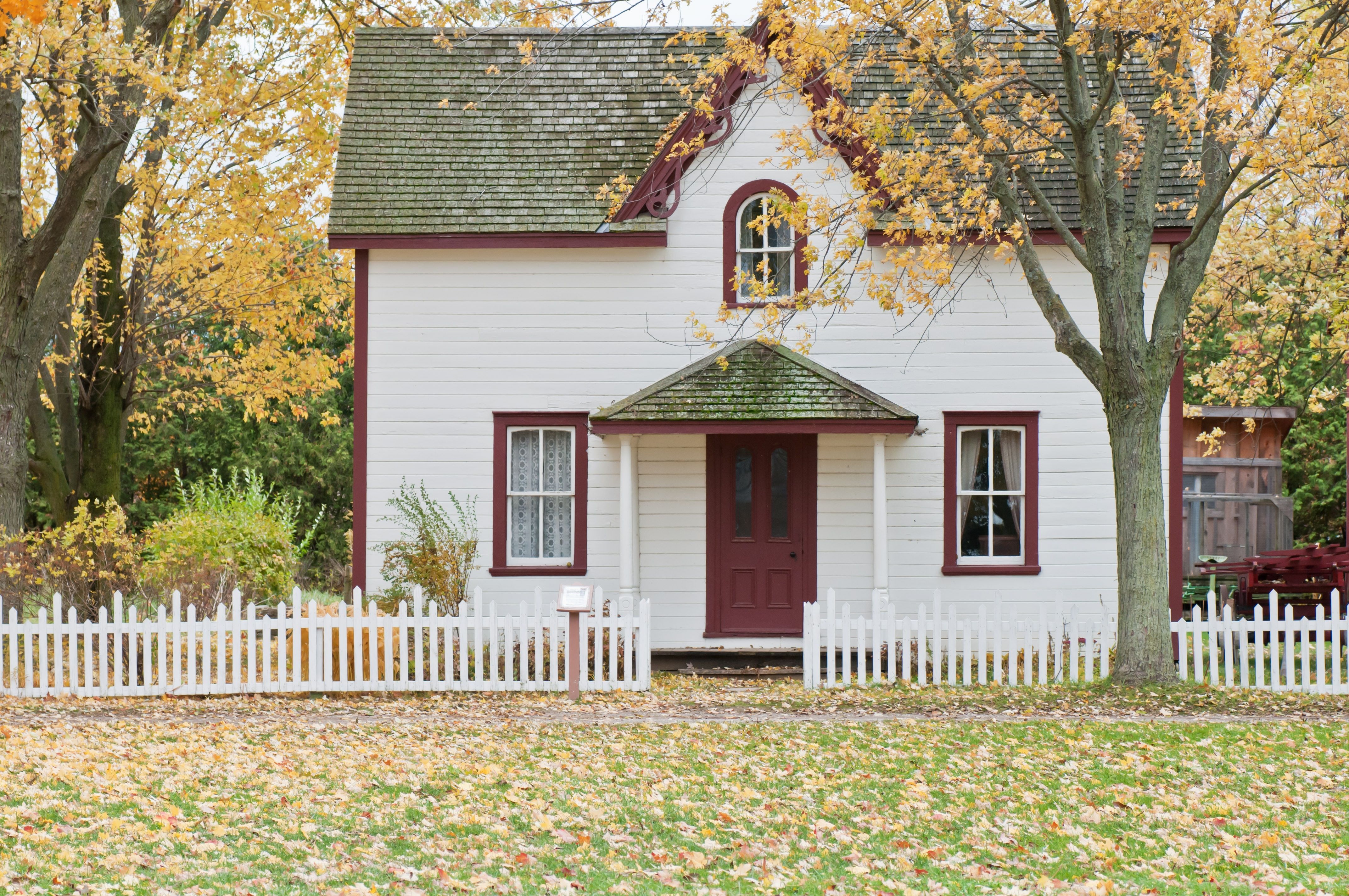
HVAC can be confusing and unless you have 15 years of experience in the industry, like me. You are probably basing your home heating strategy off of the way you’re parents have always done it. After years of experience in HVAC and as a homeowner, I have my own methods for saving money during the winter season. Contrary to popular belief, I don’t get a discount on my energy bills just because I work in the HVAC industry— I wish. So, like the rest of the world, every winter I do my best to balance my home comfort and the number at the end of my electric bill each month.
As the service manager of Rod Miller, I test out some new energy-saving tips on my own home before passing them on to our customers. After a lot of trial and error, I’ve managed to come up with a system that works for me. I believe that we should practice what we preach. So, this article is all about how my home heating strategy can help you. As it turns out, you can save money by doing something as simple as closing a curtain and changing a thermostat setting.
The Thermostat Compromise
Like many couples, my wife and I have different temperature preferences. She prefers the house at 72, while I like things a little cooler (and cheaper) at 68 degrees. We compromise and leave the thermostat set at 70. However, we don’t just let it run at 70 full time. Instead, we have our thermostat programmed to change temperatures based on our schedule.
There’s no point in heating a home when no one is inside to enjoy the heat. But one common mistake is to shut off the thermostat completely. It makes sense– you aren’t home to use the heat so why leave it on? The biggest problem with shutting off your heating system completely is the energy it takes to catch up.
If you shut off your thermostat, your heating system has to spend more energy when you come home in the evenings moving from 58 to 70 degrees as fast as possible. There goes all of the money you just saved by shutting off the system.
Instead, try setting back your thermostat between five and eight degrees. This has been proven to save you the most money without wasting energy.
There’s also no point in heating a home when you’re in bed, under the weight of a blanket. But in case of a late-night snack run, you don’t want to turn down the temperature to quite the same degree as you would when you’re gone. My method is to set it to 68 when my family is asleep, 70 when we’re awake and home, and 63 when we’re gone for the day. I’ve found this method to have the most significant savings.
It can be difficult to remember to reprogram your thermostat three or more times a day. That’s where I’ve found a smart thermostat can be a lifesaver. I’ve had a smart thermostat since I moved into my current home and have benefitted from huge energy savings with it. I would never install a thermostat in a client’s home that I wouldn’t install in my own home, so I make it a mission to test out all of the smart thermostats we offer. So far, Honeywell is my favorite. There are many good options—but I haven’t had any issues with Honeywell and found it to be reliable and convenient.
Smart thermostats make it easy to create a schedule that follows the flow of your average day with pre-programmed settings that can be adjusted from your phone. Some smart thermostats also have room-based heating within your house. This means they selectively heat whichever room you’re in without having to heat the entire house. I could not say enough good things about smart thermostats, based on my own experience and that of clients I have worked with. I highly encourage our customers to invest in them. Over the long-haul, they pay for themselves.
A Heat Pump Homeowner
I get asked a lot, “Which heating system should I install in my home? Is one more efficient than the other?” When it came time for an HVAC installation in my home, my decision was based on very simple criteria. I chose a heat pump because gas was not available. As simple as that, no big speech needed. At the end of the day, it’s all about availability.
My house runs off of two Bryant heat pumps, one upstairs and one downstairs for optimal comfort. If you’re interested in installing a heat pump, you’ll need to temper your expectations. Don’t expect the intense dry heat that comes from a furnace. Heat pumps are designed to maintain level even heat that may not keep your home quite as toasty as a furnace would.
Heat pumps have an auxiliary heating system that uses electricity to create more heat for your home. This is where heat pumps become expensive. If you want to save money, try to use the auxiliary heat as little as possible.
Heat pumps aren’t as effective at lower temperatures because they pull heat from the air outside. When it’s cold, there just isn’t that much heat to pull in. At this point, don’t be alarmed if you see the emergency heat come on. Your heat pump needs to use that extra energy to maintain temperature.
A furnace uses gas to create heat, instead of transferring it from outside to inside like a heat pump. Furnaces may not be as energy-efficient, but they do create a supply of high-temperature heat for your home with a better delivery system. The temperature outside also won’t impact a furnace as much as a heat pump.
While heat pumps can save their owners a lot of money in the shoulder seasons (spring and fall), homeowners with a furnace are winning in the winter. Because a furnace can function well no matter the weather, they’re actually more efficient than heat pumps in severe cold.
What I Do for Maintenance
If you want to get the best performance and the highest savings out of your heat pump, it’s important to maintain it properly through every season. During the winter, I care for my heat pump when I shovel the driveway. After I shovel, I head over to the heat pump and carefully knock as much snow off of it as I can. If too much snow piles up it can warp the coils and create a noisy pump that will require repairs. On top of that, a snow-encased unit just doesn’t perform well.
I actually do something a bit crazy when we get Maryland’s version of a blizzard. I shut off my heat pump altogether and just run auxiliary heat. Surprisingly, this actually winds up being more efficient. A snow-encased outdoor unit causes the coils to ice up quickly. Then when you run the heat pump the system uses all of its energy to deice and still runs auxiliary heat inside. Avoid wasting your energy deicing the pump and just run the aux heat instead.
Of course, all of this mid-snowstorm maintenance is on top of the regular maintenance that I perform year-round. Our system filters are changed every three months. This ensures that nothing becomes clogged and air can flow freely throughout the home. I always keep the area around my unit clear and avoid the temptation to do some extra landscaping. If your unit becomes clogged with debris, you could be looking at higher utility bills and more repairs.
My Advice for Big Picture Heat Savings
Investing in an energy-efficient heating system won’t do you any favors if all of that heat is flying right out of your house. It’s important to combine an energy-efficient system with a well-insulated home. At my house, I have several easy DIYs that I do every winter.
Always take advantage of the sun. The sun warms up your rooms and is a great way to heat your home naturally. Open any curtains or drapes on the most well-lit side of your house, but don’t forget to close them back up when it gets dark out. Windows are often a source of heat loss. Pulling curtains shut creates an insulating air pocket that prevents heat from escaping.
Too often people turn up the thermostat to have a cozier home when what would really make them comfortable is higher humidity. Installing a humidifier in your HVAC system can make a big difference in your comfort while also saving you money. However, this particular installation is not a DIY—call your local HVAC provider for this.
Every home has a few cold spots. These might be near a particularly leaky window or door. A great way to get rid of these cold spots is with a space heater. This prevents you from having to turn up the heat in your entire house. Personally, I keep at least three space heaters at home for when it becomes bitterly cold. I can leave the thermostat alone, pull out a space heater, and keep my family comfortable.
When I Tell My Family and Friends to Call Rod Miller
As Rod Miller’s service manager, I’m used to family and friends calling me up and asking questions or seeking advice. While I’m happy to give it, I do not encourage DIY HVAC installations or repairs. HVAC equipment can be dangerous if you don’t have the proper training to handle it. Because of this, there are several situations where I encourage people to call.
If you’ve started to notice low air pressure throughout your vents or your heating system has become noisy, it’s time to contact Rod Miller. This requires diagnostic equipment and more know-how than Dr. Google can give you.
If you have a really old furnace or heat pump that you would like to replace, don’t try to do it yourself. These appliances use refrigerant and natural gas and can be dangerous to work with. Any sort of installation project requires professional help.
My final piece of advice to friends and family is to sign up for a service agreement with Rod Miller. This includes 10 percent off of parts, routine maintenance in the fall and spring, priority scheduling, and more. Trust me, I don’t give my family bad advice. Learn more about signing up for a service agreement for your home.


